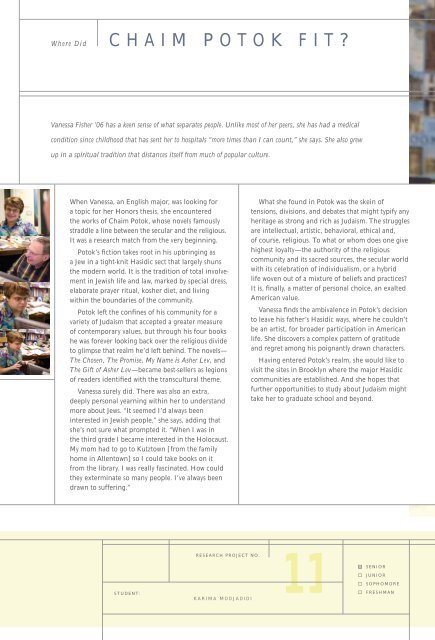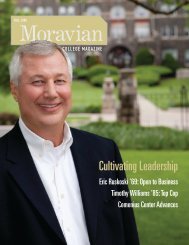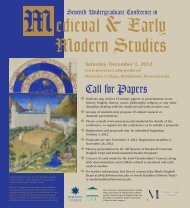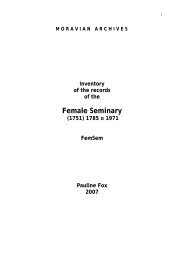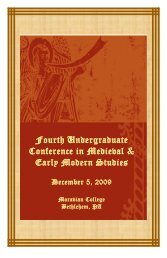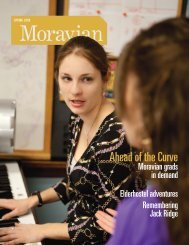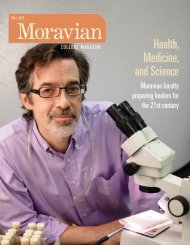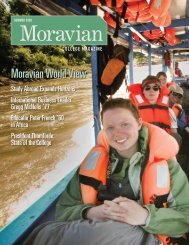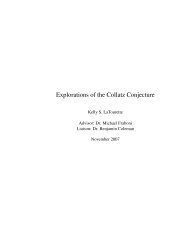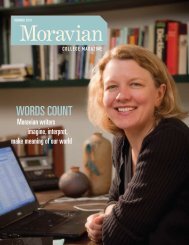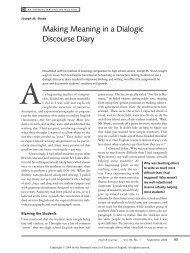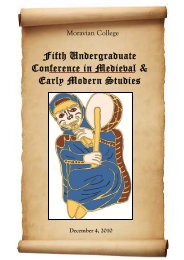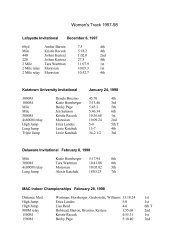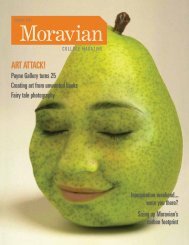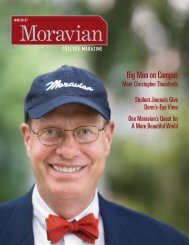Create successful ePaper yourself
Turn your PDF publications into a flip-book with our unique Google optimized e-Paper software.
Where Did CHAIM POTOK FIT?<br />
Vanessa Fisher ’06 has a keen sense of what separates people. Unlike most of her peers, she has had a medical<br />
condition since childhood that has sent her to hospitals “more times than I can count,” she says. She also grew<br />
up in a spiritual tradition that distances itself from much of popular culture.<br />
When Vanessa, an English major, was looking for<br />
a topic for her Honors thesis, she encountered<br />
the works of Chaim Potok, whose novels famously<br />
straddle a line between the secular and the religious.<br />
It was a research match from the very beginning.<br />
Potok’s fi ction takes root in his upbringing as<br />
a Jew in a tight-knit Hasidic sect that largely shuns<br />
the modern world. It is the tradition of total involvement<br />
in Jewish life and law, marked by special dress,<br />
elaborate prayer ritual, kosher diet, and living<br />
within the boundaries of the community.<br />
Potok left the confi nes of his community for a<br />
variety of Judaism that accepted a greater measure<br />
of contemporary values, but through his four books<br />
he was forever looking back over the religious divide<br />
to glimpse that realm he’d left behind. The novels—<br />
The Chosen, The Promise, My Name is Asher Lev, and<br />
The Gift of Asher Lev—became best-sellers as legions<br />
of readers identifi ed with the transcultural theme.<br />
Vanessa surely did. There was also an extra,<br />
deeply personal yearning within her to understand<br />
more about Jews. “It seemed I’d always been<br />
interested in Jewish people,” she says, adding that<br />
she’s not sure what prompted it. “When I was in<br />
the third grade I became interested in the Holocaust.<br />
My mom had to go to Kutztown [from the family<br />
home in Allentown] so I could take books on it<br />
from the library. I was really fascinated. How could<br />
they exterminate so many people. I’ve always been<br />
drawn to suffering.”<br />
STUDENT:<br />
RESEARCH PROJECT NO.<br />
KARIMA MODJADIDI<br />
What she found in Potok was the skein of<br />
tensions, divisions, and debates that might typify any<br />
heritage as strong and rich as Judaism. The struggles<br />
are intellectual, artistic, behavioral, ethical and,<br />
of course, religious. To what or whom does one give<br />
highest loyalty—the authority of the religious<br />
community and its sacred sources, the secular world<br />
with its celebration of individualism, or a hybrid<br />
life woven out of a mixture of beliefs and practices?<br />
It is, fi nally, a matter of personal choice, an exalted<br />
American value.<br />
Vanessa fi nds the ambivalence in Potok’s decision<br />
to leave his father’s Hasidic ways, where he couldn’t<br />
be an artist, for broader participation in American<br />
life. She discovers a complex pattern of gratitude<br />
and regret among his poignantly drawn characters.<br />
Having entered Potok’s realm, she would like to<br />
visit the sites in Brooklyn where the major Hasidic<br />
communities are established. And she hopes that<br />
further opportunities to study about Judaism might<br />
take her to graduate school and beyond.<br />
11<br />
■ SENIOR<br />
■ JUNIOR<br />
■ SOPHOMORE<br />
■ FRESHMAN


